The enduring Hock Teck Cheng Sin Temple
A Taoist institution that drove significant initiatives to uplift Bukit Mertajam’s Chinese society
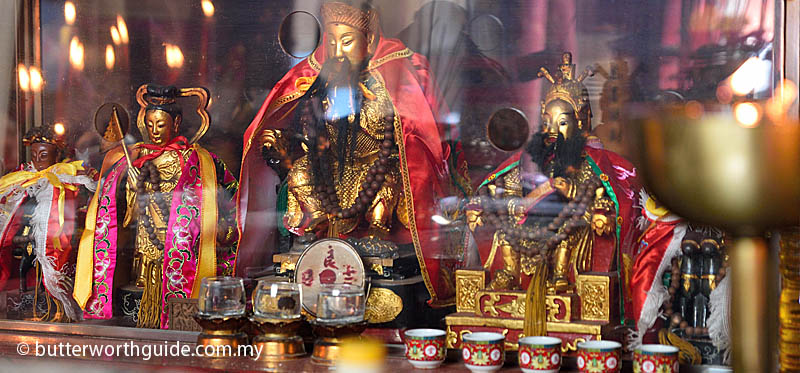
Few temples in Malaysia have exerted as much socio-cultural influence over a town’s community like the Hock Teck Cheng Sin has over the religious, economic and educational affairs of the Chinese in Bukit Mertajam. Despite its fairly small size, the Taoist temple has since its construction in 1886 commanded enormous respect among locals and was responsible for much development in the inner parts of the town. It owned significant parcels of land where it ventured to build infrastructure for the benefit of society. These included the Bukit Mertajam market which continues to this day, large tracts of cemeteries and the Jit Sin Chinese school which remains one of the foremost educational institutions in the country.
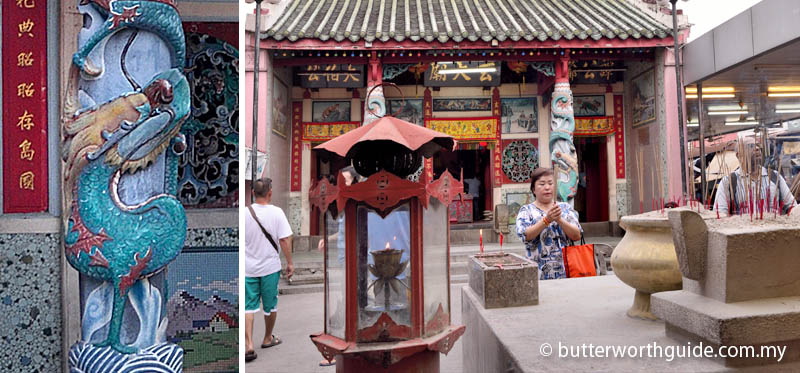
The site where the temple stands was originally a natural pond in the heart of the emerging little town during the 19th century. People from farms and villages in outlying areas like Berapit and Cherok To’ Kun used to converge around the pond to trade their agricultural produce like vegetables and fruits. As more people came here to sell their merchandise, it was decided that the pond should be filled up. The temple was constructed over it. Till today the road there is known as Jalan Pasar or “market road”.
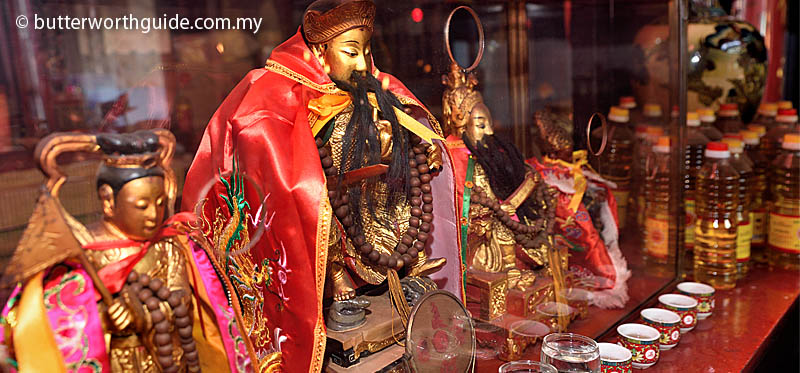
After the Second World War, the temple went through a major reorganisation with an exclusive committee structure introduced in 1949. The members of this committee were assigned by the four Chinese ethnic clans of the Hokkien, Teochew, Hainan and Kwong Wai Siew. The temple should not be mistaken for its century-old namesake located at Armenian Street on Penang island. Both temples are however dedicated to the Taoist god of prosperity, Tua Pek Kong. Both are also replete with traditional carvings, motifs and aesthetic designs made by artisans from China.
The Hock Teck Cheng Sin in Bukit Mertajam continues to impress visitors with its charming humble frontispiece. Every architectural detail beneath the arched rooftop gables radiates with modest beauty. There are just two simple steps leading to the temple’s main doorway which is flanked by two windows with intricately latticed grills and a pair of columns decorated with slithering dragon sculptures. The spaces above and around the entrance portals are bedecked with colourful tableaux featuring illustrations of significant scenes from ancient Taoist mythologies.
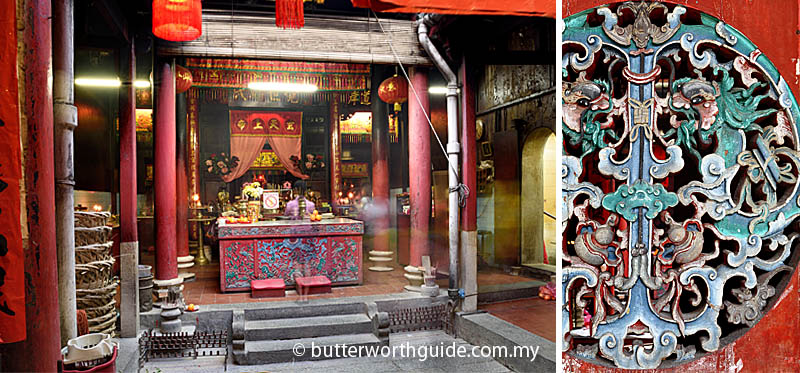
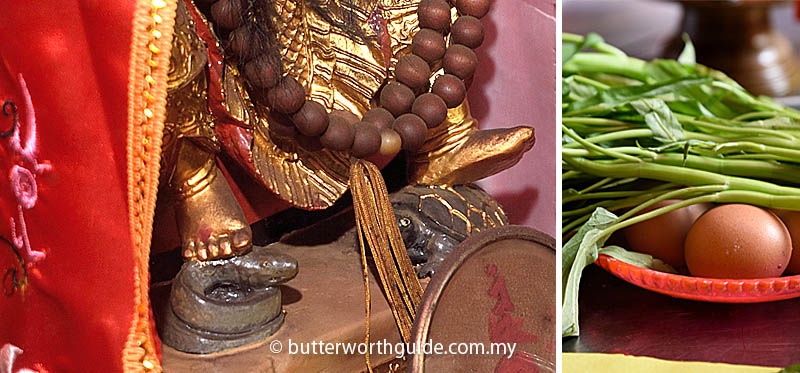
Upon stepping into the interior chamber, one may sense a poignant hush due to the intimate confines of the place which is naturally brightened by skylight cascading through a central air well. The inner walls and pillars are mainly draped in red, the traditional Chinese colour of good fortune and prosperity. The principal altar is fronted by a low entablature on whose top surface are placed offerings like flowers and fruits, as well brass containers with joss sticks. Worshippers are constantly seen leaning down on kneeling stools to offer their prayers and respects to the deity here.
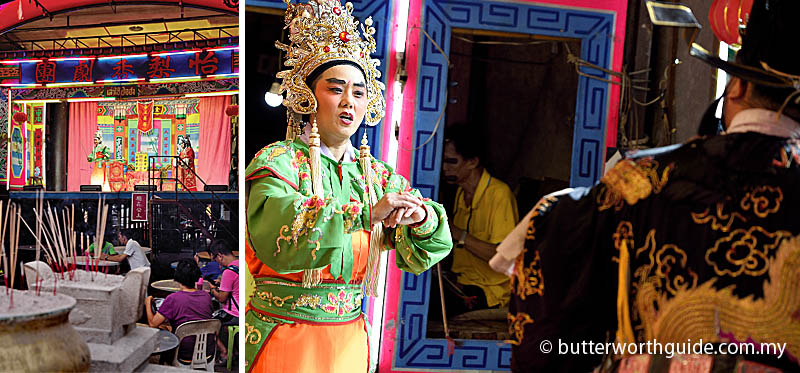
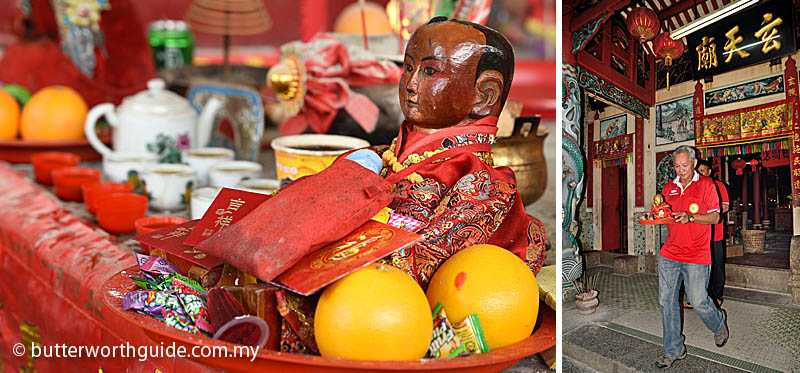
Interestingly, just outside the temple, facing its main entrance, was an opera stage where traditional music and drama shows are usually presented for the public during Chinese festivities (e.g., Hungry Ghost festival). Patrons at an adjacent hawker centre often watch the shows while enjoying their meals or drinks. The open performances provide a treat for common folks in the modern age who get to enjoy such rare forms of entertainment that are steeped in Chinese culture and heritage.
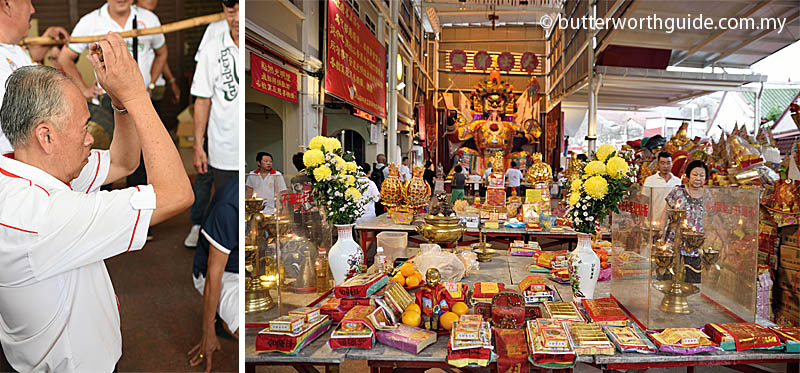
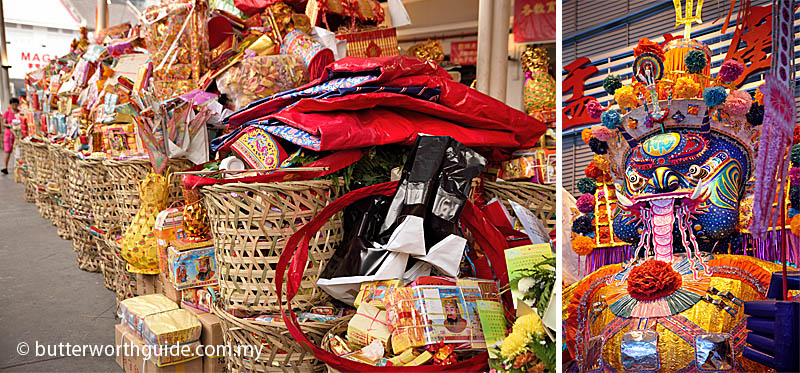
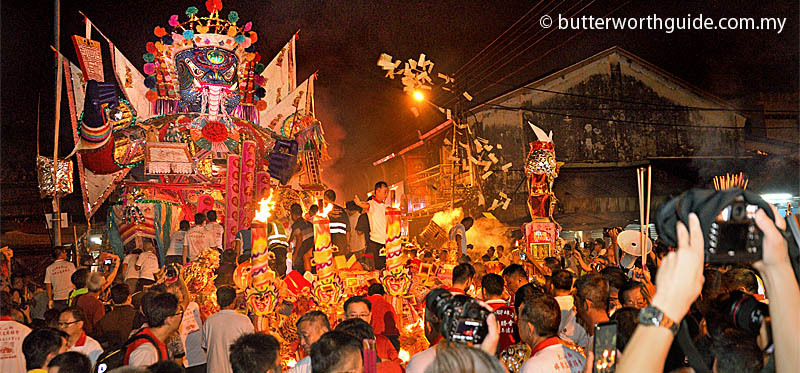
Every year, the Hungry Ghost festival is celebrated on a grand scale by the Chinese community in Bukit Mertajam. For 2018, a towering 8.3m tall effigy of Tai Su Yeah was commissioned. It took three months to complete and was located at the prayer site beside the Tua Pek Kong Temple. Here, most of the residents and traders in Bukit Mertajam and some from across the Island came to seek blessings and prayed for prosperous days ahead. The effigy, with a small figurine of Goddess Guan Yin on the head, was given a grand send-off on 27 August in a giant bornfire.
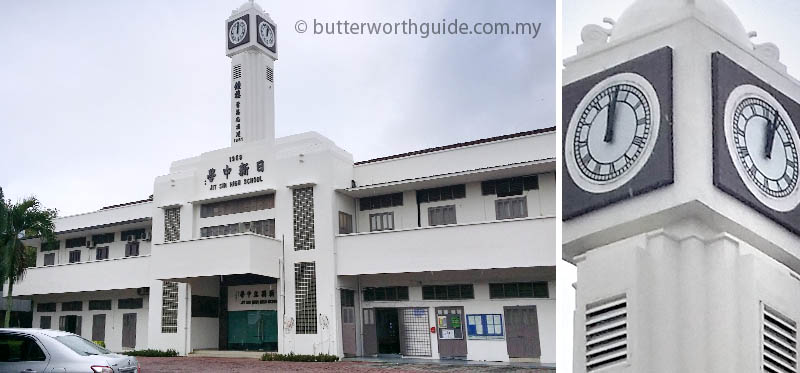
A lasting contribution of the temple, the Jit Sin Independent High School, lies at Jalan Aston nearby with an iconic clock tower on its main building. The land belongs to the temple and the Hock Teck Cheng Sin’s office is till today located within the school compound. Though the school was established in 1959, it is part of an education system that was incepted much earlier in 1894 when the Hock Teck Cheng Sin began running a free school for children in shop lots at Jalan Pasar near the temple. The initiative led to the Jit Sin Primary School (A) and (B) as well as a high school of the same name under the government, along with the independent school, all of which thrive till today.
-------------------------------------------
Written by Himanshu Bhatt
Photographs © Adrian Cheah
© All rights reserved.